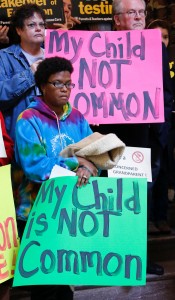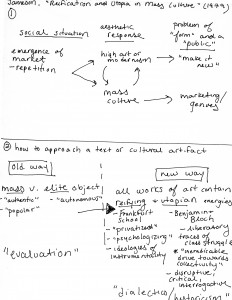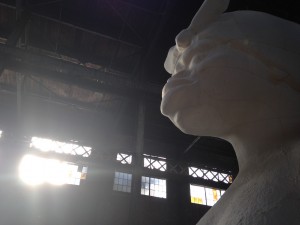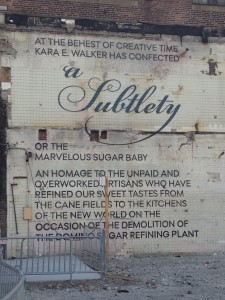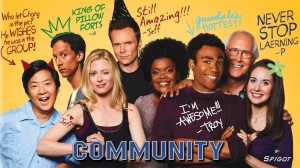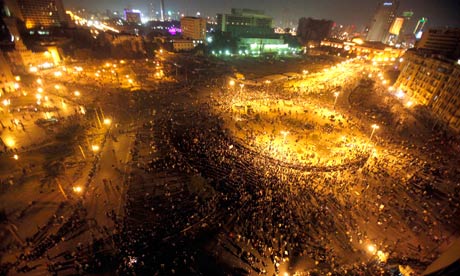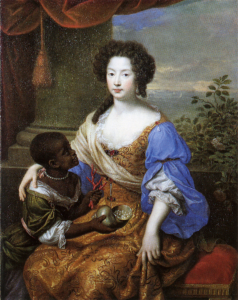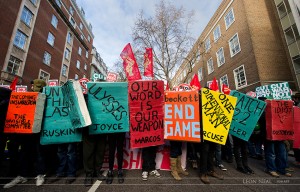Better late than never, I hope. Lynne Beckenstein and I had too much fun co-authoring this event review not to share it. It was one of the most generative collaborative experiences I’ve ever had, one that continues to inspire my belief that working together can produce more than what we can single-handedly.
____
Review of MoMA’s “Supposium” March 2014
This March, the Museum of Modern Art hosted its first ever “Supposium,” an afternoon of philosophical revelry that challenged participants to think beyond ordinary binaries–silence and sound, center and periphery–that might blind us to the extraordinary. This year’s event, “Beyond Default Geographies of Attention: Six Thought Experiments Beginning with ‘Suppose,’” featured six eclectic luminaries: Anne Carson, Sandi Hilal, Peter Krapp, Fred Moten, Adam Pendleton, and Joan Retallack. The Supposium’s mysterious flyer announced that “In the midst of our planetary emergency of too many emergencies, we will enter a space-time bracket of serious play / playful gravitas initiated by a series of thought experiments beginning with ‘Suppose…..’” The conditions of this conditional are “emergency,” invoking both the exigency of global precarity and the emergent possibilities for imagining alternatives.
Joan Retallack began by asking the audience to approach these performances in a spirit of playfulness, as though the panelists’ “strategies for eluding default geometries of attention” were part of a game – a game in which we were all active participants. The premise was that, in this mode of being “playful mind-bodies with the capacity to disturb,” we might unlock “the puzzle of the Supposium.” In other words, we might transcend certain fixed modes of thinking about large-scale global crises, while considering what constructs allow us to do that work. Rather than operating in a traditional critical mode, the event’s thought experiments invited us to consider the generative role of performance in re-issuing the clarion call for black English in the wake of Trayvon Martin and Jordan Davis and humming along with Miles Davis as (re)visionary soundscapes of democracy and justice.
Sandi Hilal was the first to take up Retallack’s challenge to destabilize our old models for determining value. She theorized the architecture of permanence and belonging through the conditions of exile in West Bank refugee camp. Rather than privilege the political discourses of nation-states, Hilal reviewed the history of the “roofless camp” from 1948 to the present, in which Palestinian refugees refused to build structures that might imply permanent resettlement. In doing so, she raised critical question about rootedness and the right to return: How might these roofless homes help us to rethink collective spaces? How can they inform our attempts to put the refugee at the center at the world?
Peter Krapp situated this work of supposing within a long history of simulation, reviewing how the category of the thought experiment has evolved against a backdrop of political crises and technological innovations. To test the validity of our assumptions, we have to “close down the critical distance,” and engage in roleplay without a rigid binary between real and unreal. For example, can we make the imaginative leap required to envision data-mining on a planetary scale? How might information about global warming help us “optimize global behavior,” and sync up to cool down? To fail may be expensive, though the cost of inaction is worth the risk.
Adam Pendleton began with a memory of a freestyle rap performance, telling the story of how Common, DJ Hightech, Dela Soul, Talib Kwali, and the DJ improvised collaboratively, shifting pace and rhythm through “multiple levels of call and response” with transformative potential. He both recounted the experience and re-staged it for us, shifting between his own voice and that of the musicians – “Find heaven in this music and God,” he called out, in a refrain – as a performance of what it means to reclaim black English. This black English has the potential to interrogate a culture steeped in racialized violence, a culture that permits the murders of young black men like Trayvon Martin and Jordan Davis. In the idiom of 21st-century U.S. political imaginaries, it is a language “that occupies, that stands ground.”
Fred Moten used music to tell its own story, outside of language: without comment, he played a recording of Miles Davis for us. As the sound waned, he began to expound upon the recursive arrangement, how the jaunty sax returns to express a wistful yearning, climbing the scale with nostalgia for what has come before. Moten sang his own lyrics for Davis’s melody: “Supposing I should fall in love with you,” a conditional that he riffed on throughout his meditation on the social situation of philosophy. Philosophy inhabits a state of fugitivity, requiring us to “find the slave in the text,” to “study how to listen” in order to speak out of turn. As in jazz, we need to understand the theme and the variation of the theme as coterminous; we get to the variation through revolt, through falling in love, through accompaniment that takes us to “the knowledge that precedes knowledge.” Beyond default geographies of subject-positioning, suppositioning.
Anne Carson read her poem, “Seated Figure with Red Angle (1988) by Betty Goodwin,” from her 2001 collection Men in the Off Hours. Before her reading, she showed us an image of Goodwin’s drawing, then shared the impetus of the poem: confronted with a work of art that makes the artist want to fall silent, how does one begin to suppose? For Carson, even the grammar of the conditional was not enough to apprehend the depths of Goodwin’s artwork, a sketch of a faceless figure that hovers on the surface of the page. Carson’s starting point was protasis, but she left out the “then” of each“if/then” clause. In her list of 73 “If…” phrases, the intention, Carson said, was to leave out the fact, and leave in the hesitation: “If reach in, if you burrow, if you risk wiping in…” Each line of the poem ends in an open-ended pause, a silence that disturbed in its refusal to finish the thought.
Following these multimodal presentations, ranging from the academic to the melodic to the ekphrastic, the audience’s task was to then break into groups and respond to the presenters’ injunction: “We must choose to suppose.” This mode of engagement modeled a form of playful amateurism, encouraging participants to riff on the terms of the presenters’ interdisciplinary fields. In our own group, we formulated and re-formulated questions about power, representation, and voice, attempting to think through the conditions of exile that Hilal represented. As participants, we found ourselves uncertain about how to approach the conditions of fugitivity, refugee, and exile in the playful ethos of the Supposium – that is to say, how playful we could afford to be, without occluding the gravity of these experiences? When we rejoined the rest of the audience, it turned out that most of the participants had risen to this challenge by moving back and forth between the literal and figurative, unsettling the boundary between them. They performed these responses through incantatory recitations, spoken word, and song. One group chanted pronouns and asked, “What are the pronouns conjuring?” One sang, “Language is the flight of refugees,” standing in a chorus line; another broke apart to read different pieces simultaneously, facing different sections of the room.
Despite these exhilarating variations in form and content, there was a thread of continuity: the audience had latched onto the conditional and, following the example of the six presenters, now linked it to the collaborative. “Suppose there were no passengers on spaceship earth,” one group suggested. “We are all crew.” The Supposium implicated participants in a low-stakes game, providing a playful space to experiment and fail–to figure out what works and doesn’t in the poetics of dislocation. Not knowing the rules, or even what was possible, we played together for three hours in the modality described by Lauren Berlant in her series of blog posts on “The Game”: “The game is a form of life coming into being, extension, and activity, the blinking open at the start of the day and the beyond to anything that was explained.” Berlant offers the terms for the game in a series of conditional clauses; like Carson, she strips away the abodases from a series of conditional statements, leaving the protases that tantalize us with their incompleteness: “if you let a piece go without completion… if we could come forth as “I” with the other objects, if we would take in that all things don’t happen for a reason..” In the silence of these unfinished “if…” clauses, we have the space to imagine different possibilities, ways of thinking for which we don’t have language yet.
